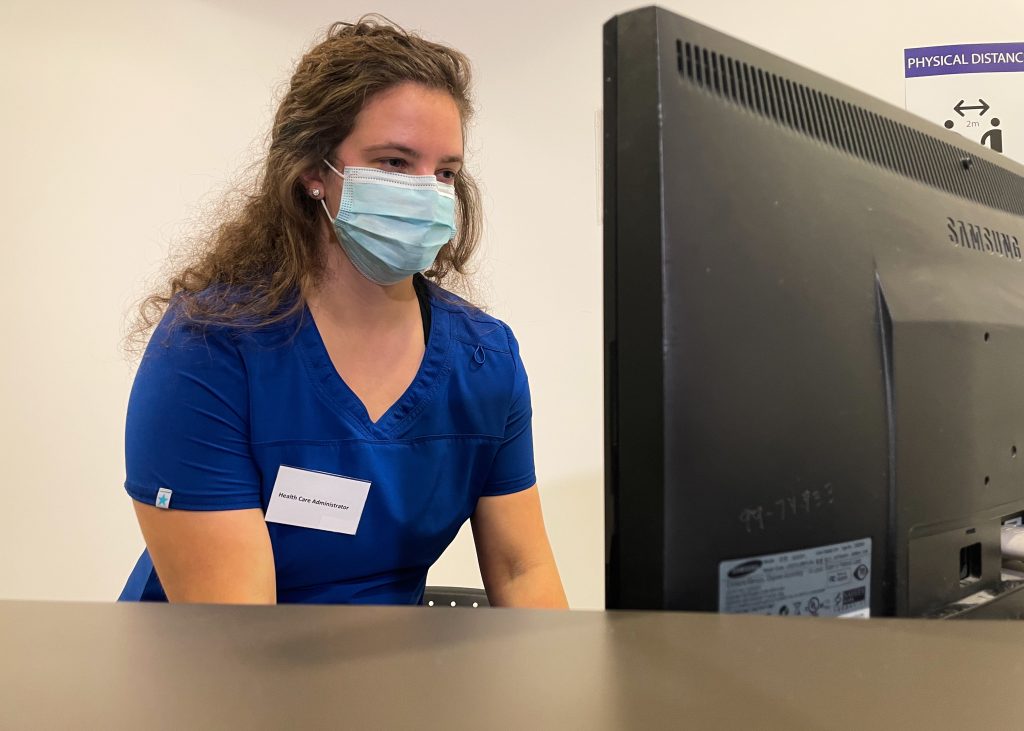Chapter 6: The Basics of the Inpatient Care Record
Electronic Patient Care Records

The HUC or registration clerk creates the electronic patient care record or e-Chart for all patient encounters through the admission process. Once the admission conversation is complete and the admission filed or saved in the clinical information system, the e-Chart is visible and ready to access. However, at this point, the e-Chart is just a shell with basic admission information awaiting further direction. An appropriate care plan or critical path must be electronically added to the e-Chart to guide basic patient care. Once attached, the care plan or critical path will populate a variety of screens with interventions and assessments appropriate for the patient’s diagnosis for the nursing and allied staff to follow.
The physician then will add admission orders for investigations, treatments/consults, and medications to further direct patient care. In a fully computerized environment, the physician’s orders are entered through the computerized physician order entry (CPOE) process, while in hybrid environments, the physician will either write them by hand on Drs. order sheets or use pre-printed or standing orders. With CPOE, the HUC does not need to manually enter diagnostic tests, medications, or directions for care into the patient chart as they will automatically flow from the computerized order (Gillingham & Wadsworth Seibel, 2014).
Even in the fully electronic environment, the HUC must still be aware of the purpose of each section of the e-Chart and where to locate relevant patient information within the chart, as they will still need to access information regarding patient activity, diets, consults, test results, and medications in their day-to-day duties.
Example: Critical Path
A total hip replacement critical path may include the following interventions:
- ambulation
- surgical incision assessment
- vital sign assessment
- oxygen saturation monitoring
- intravenous monitoring
- pain and respiratory assessments
- and much more!
The MRP (orthopedic surgeon) would then add patient-specific orders (often daily) that address areas such as:
- diet
- pain medications
- antibiotics
- home medications
- physiotherapy
- home care referrals
- specific equipment
- weight-bearing status
- blood work
- and much more!
References
Gillingham, E. A. & Wadsworth Seibel, M. M. (2014). LaFleur Brooks’ health unit coordinating (7th ed.). Elsevier.
Vera, M. (2024, August 9). Nursing care plans (NCP) ultimate guide and list. Nurseslabs.
Attributions
“Woman in blue scrubs in mask at computer display,” © Conestoga College, licensed Creative Commons – Attribution-NonCommercial-ShareAlike 4.0 International.
set of questions asked during the registration process, such as name, DOB, insurance, providers, medical alerts
pre-developed guide to ensure that patients receive consistent care, minimally acceptable standards are met, and nurse's time is used efficiently; standard care plans provide the same interventions for all patients, without account of the patient's diagnosis
a pre-developed guide that outlines the appropriate sequence of clinical interventions, timelines, milestones, and expected outcomes for patients with a specific diagnosis, such as fractured hip or bowel resection
process in which a physician directly enters orders into the patient chart; replaces handwritten orders on an order sheet or prescription

